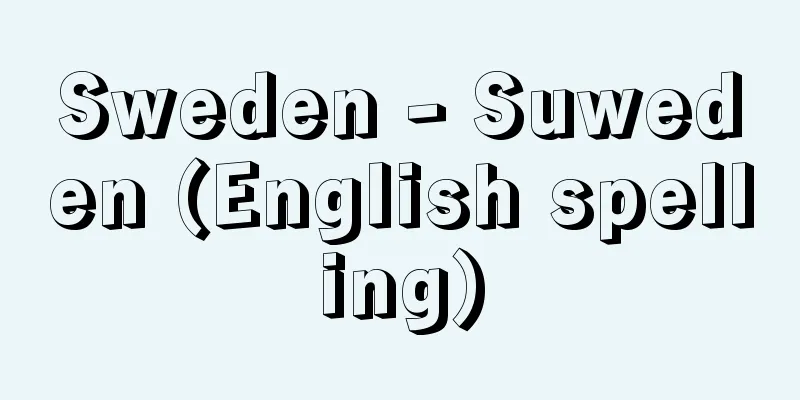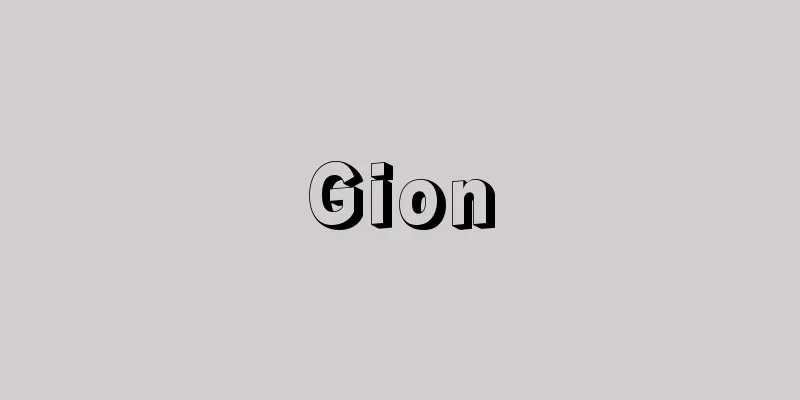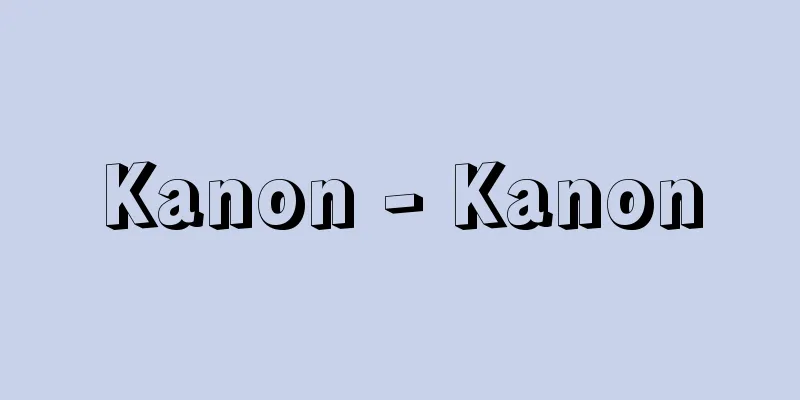Sweden - Suweden (English spelling)

|
A constitutional kingdom occupying the eastern part of the Scandinavian Peninsula in northern Europe. It has an area of 450,295 square kilometers, and a population of 9,081,000 (UN estimate in 2006), 9,276,509 (as of the end of April 2009). Its capital is Stockholm. In Swedish it is called Sverige, which means "Land of the Swedes". Its official name is the Kingdom of Sweden (Konungariket Sverige). Its national anthem, "Det Gamla, det Fria" (Homeland, Freedom), sings of the freedom-loving national character of the Swedes. The Swedes, known as Vikings from around the 9th century, were a maritime people who made expeditions in search of trade, but they settled in Scandinavia around the 10th century with the spread of Christianity. In the Middle Ages, Stockholm, Kalmar, and other cities joined the Hanseatic League and saw commercial development, but politically, Denmark was threatened by the rule of the Danish king under the Kalmar Union (a personal union of Denmark, Norway, and Sweden). Denmark gained independence in 1523 under King Gustav Vasa (Gustav I). Since welcoming Bernadotte (Charles XIV) as crown prince from France in 1810, Denmark has maintained neutrality and peace in both the First and Second World Wars. By utilizing iron ore, forests, and water resources and through the steady efforts of its people, Denmark once maintained the second highest per capita national income in the world after the United States. Although the economy stagnated after the 1973 oil crisis, Denmark's per capita gross national income (GNI) is still relatively high among the member states of the EU (European Union), and Denmark is a welfare state that maintains a high standard of living. While the country takes a unique position in international diplomacy by upholding neutrality and humanitarianism, its people are calm and full of creativity, and it is also a cultured nation that has produced many scientists, including Nobel Prize winners. [Koko Nakajima] NatureSweden occupies the eastern part of the Scandinavian Peninsula, and except for its southwestern part facing the strait leading to the North Sea, it faces the inland Baltic Sea and the Gulf of Bothnia. The country is long and narrow, stretching 1,574 km from north to south, and the northern part is inside the Arctic Circle, but half of it lies south of the 60th parallel. [Masahide Shiki] Topography and geologyIn the northwestern part along the Norwegian border, the Scandinavian Mountains run from Norway, and in the north, the Sarek massif (2,090 meters) and Sweden's highest peak, Kebnekaisse (2,123 meters), are high, exceeding 2,000 meters. The Scandinavian Mountains are a folded mountain range of Paleozoic strata caused by the Caledonian orogeny of the Paleozoic era, and are connected to the Baltic Shield on the east by a fault that overturns it, and the border is called the Glint Line. The Baltic Shield is made up of rocks from the Archean and Proterozoic eras, the oldest on Earth, and it accounts for 80% of the country's land area. It is mainly made up of granite, gneiss, and crystalline schist, and has a complex geological structure that has been subjected to significant metamorphism by several mountain-building movements before the Paleozoic era. Most of the Baltic Shield is the Norrland Plateau, 500-200 meters high and inclined southeast, which stretches from north to south on the eastern side of the mountain range and occupies half of the country. South of the Norrland Plateau is the Swedish Central Lowland, which includes the three great lakes of Vänern, Vättern, and Mälaren, and to the south of that is the Småland Plateau (270 meters), which rises in elevation again, and the southern edge is the Skåne Lowland, a peneplain that cuts off the Mesozoic layer. During the Pleistocene (Pleistocene) ice age, the entire area was covered by the Fennoscandian ice sheet, centered on the Gulf of Bothnia. The ice sheet melted about 10,000 years ago, leaving clearly visible mounds and depressions in the bedrock eroded by glacial erosion, which form the basis of the topography. Sediments derived from glaciers, such as moraines and eskers, are arranged in relation to the direction of the ice flow and cover the topography. The depressions are filled with numerous lakes, marshes and wetlands, and the inland water surface area accounts for 10% of the total land area. Rivers such as the Dal and Král connect these lakes, and the river valleys of Norrland are in the early stages of development, running parallel to each other from the northwest to the southeast. After the ice melted, the sea level rose temporarily and intruded, but the ground continued to rise at a rate of several millimeters per year due to isostasy, leaving traces of the transgression up to 260 meters. The resulting clay coastal plains provide fertile farmland along the coast. Except for these plains and in the region of Scania, the soil is poor as a result of the erosion of the ice sheet stripping away the topsoil. The rocks of the Baltic Shield contain iron, copper, lead and other ores, which are being mined in the Kiruna area in the north and the Bergeslagen area in the central part of the country. [Masahide Shiki] Climate and vegetationThe climate is somewhat continental, with monthly average summer temperatures ranging from 15°C in July in the north to 17°C in the south, although farmland in the north is subject to summer frost. Winter temperatures vary widely, from -1°C in February in the southwest to -12°C in the north. The vegetation season is 240 days in the south and 100 days in the north, and the Gulf of Bothnia freezes over for several months in the north, resulting in cold weather. The low salinity of the region also makes the bay prone to freezing. Precipitation is slightly higher in summer but is fairly even throughout the year, with snowfall in winter. Due to the rain shadow effect of the Scandinavian mountains, the annual precipitation is less than 500 mm in the northeast, but exceeds 700 mm in the southwest, where it is not affected. Precipitation increases with height, reaching about 2000 mm in the mountains near the Norwegian border. Wheat grows in the southern tip, but not in the central lowlands and north of the region, where barley and pasture are the main crops. Sweden's forest area exceeds 50% of the country's land area, and it belongs to the high-latitude coniferous forest zone following the Siberian taiga (coniferous forest zone), and is mainly made up of Norway fir and Scots pine, with some birch and poplar added in. Small glaciers remain in the mountains, and tundra (permafrost zone) can be seen, while the southwestern coast is home to deciduous broadleaf forests including beech. [Masahide Shiki] GeographySweden is generally divided into three major regions: Götaland in the south, Svealand in the middle, and Norrland in the north, whose names come from the fact that they were inhabited by different tribes in ancient times. In addition to this division, the border between the cultural regions of Sweden, which is based on ethnological considerations, is the line connecting the mouth of the Dal River and the northern shore of Lake Vänern, which divides Sweden into north and south. Topographically, this border also coincides with the end of the Scandinavian mountain range, and there are differences between the north and south. Before industrialization, the northern part of the country had a small area of cultivated land, and people mainly made a living from dairy farming, forestry, and hunting. The cold climate was suitable for growing rye and barley, so people ate hard bread made without yeast and yogurt-like milk. As men were away from home working in the forest or hunting, dairy farming was the work of women. The custom of spouse selection, similar to that of youth hostels in Japan, was a social custom permitted in this region before the spread of railways, and as the area is rich in coniferous forests, the architectural style used was a wooden frame similar to the Azekura style. The Sami people, who live in the mountains and tundra of the far north towards neighboring Finland, follow reindeer to the coast in winter and the mountains in summer, and have a unique language and culture that differs from the North Germanic Swedes. In contrast, the southern part of Sweden has a large cultivated area, a warm climate except for the Småland region in southern Sweden, wheat is produced, and the culture of yeast-based bread is said to be great. The architectural style is also wooden pillars and clay walls, and there are many large farmers in the southern region of Scania, so marriages were also arranged by matchmaker, with consideration given to wealth. In addition, regional differences have arisen due to the influence of historical borders. Southern Gothenburg was part of Denmark until 1660, so Danish influence remains in the language and customs. Furthermore, the area centered around Gothenburg has long been influenced by British and Dutch culture, while the east coast area centered around Stockholm is influenced by Eastern European countries and Germany. The two regions form the border between Western and Eastern European culture, and differences remain in terms of urban formation and annual events. Although the differences between these cultural spheres are gradually being equalized through the development of transportation and communication networks, even in the 20th century, characteristics were evident in the way new information was transmitted, such as the mechanization of agriculture. Looking at regional characteristics of industrial development, commerce and industry developed around the cities of Stockholm, Gothenburg, and Malmö, agriculture in the south, forestry in the north, and Svealand in the center, which is an intermediate region showing characteristics of both. The north has a well-developed pulp and paper industry that makes use of water and forest resources in the coastal region, and is also rich in iron ore resources, but because it is far from Western European markets, growth has been sluggish despite the government's policy of attracting industry, and population outflow has become an issue. [Koko Nakajima] historyIt was only from around the 14th century that Swedes began to record their history in the form of chronicles; to learn about their history before that, we must rely on archaeological sources, runic inscriptions, and documents written on the European continent (such as the writings of the Roman Tacitus and the Gothic Jordanes). [Haruki Homma] Primitive and ancientHumans began to settle in Sweden shortly after the glaciers retreated, probably around 10,000 to 8,000 BC. Many dolmens and stone chamber tombs remain as traces of their existence, especially in the southern part of the country. Later, around 2,000 BC, Indo-Europeans migrated and settled there. During the Roman period, trade with the continent became active, with amber and furs being the main exports. In the 5th and 6th centuries, many tribal states began to form, among which the Swedes in the Uppland region prospered particularly well and advanced into maritime trade. This period is known as the "Vendel Period." By the 9th and 10th centuries, many tribal states had united, centering around the Swedes, and the prototype of Sweden was formed, but the country's character as a tribal confederation remained for quite some time. The 9th century marked the beginning of the Nordic expansion into foreign lands, or the Vikings. The Swedes mainly traveled east across the Baltic Sea, and then traveled via inland waterways to the Black Sea and the Caspian Sea, establishing trade relations with Byzantium and the Arab world. Their exports included timber, furs, and Slavic slaves, and in return they mainly received silver coins from the Arab world and Byzantium. In recent years, a large number of coins thought to have been imported in this way have been unearthed in Gotland, Lake Mälaren, and other places. Some of the overseas expeditionaries settled along the trade routes and eventually assimilated with the Slavs. Others advanced westward with the Danes and others. After the 11th century, this kind of activity gradually declined due to the rise of the Slavs and changes in the trade situation in Europe. [Haruki Homma] middle agesIn Swedish history, the start of the Middle Ages is usually considered to be much later than in other European countries, around the 11th century when a unified kingdom was almost formed. Christianity gradually began to spread from around 1000, overcoming the persistent resistance of indigenous religions and by the 12th century it had taken root throughout almost the entire country, with bishoprics and monasteries established. In the 12th and 13th centuries, the country invaded Finland under the pretext of spreading Christianity. Until the first half of the 13th century, there were successive civil wars over the throne, but during this time the compilation of local law codes began. In 1250, Birger Jarl placed his son Valdemar on the throne (reigned 1250-1275), weakened the power of the great feudal lords, and worked to establish royal authority. Later, during the first half of the 14th century, state institutions were considerably improved under the rule of Magnus I (reigned 1275-1290) and Magnus II (reigned 1319-1364), and a national legal code was enacted in 1350. During this time, German forces, including the Hanseatic League, began to make significant inroads into Northern Europe. From the mid-14th century, conflicts between the nobles and the king frequently arose, and in 1364 Magnus II was dethroned and Albrecht, Duke of Mecklenburg (reigned 1364-1389), was elected king. However, Albrecht also placed German bureaucrats in high esteem, and he soon found himself embroiled in conflicts with the nobles. Margrethe I, regent of Denmark and Norway, took advantage of this situation by defeating and dethroning Albrecht in 1389, cleverly suppressing the power of the nobles, and in 1397, uniting the three Nordic countries with her nephew Eric as nominal king (reigned 1397-1439), and taking control of them for herself. After Margrethe's death, Eric caused discontent among the Swedes through wars with the Hanseatic League and oppression by Danish bureaucrats. In 1434, Engelbrekt rebelled against Eric's rule together with miners and peasants, and the rebellion quickly spread throughout the country. The national assembly he convened in Arboga in January 1435 is said to be the prototype of the later parliament. After he was killed the following year, the nobles, including Karl Knutsson, who took the lead in the rebellion, sought to compromise with the Danish side and instead began to suppress the actions of the peasants. After 1471, a system was established in which a Swedish regent ruled under a formal union with Denmark. In 1477, Uppsala University was founded, and in 1483 printing was introduced. [Haruki Homma] Early modern periodIn the early 16th century, taking advantage of the conflict between Regent Sture and Archbishop Trolle, Danish King Christian II attempted to strengthen the union, and in 1520 he temporarily subjugated Sweden. However, the anti-Danish struggle led by Gustav Vasa gained strength after 1521, and in 1523 the union was dissolved and Gustav became king (Gustav I, reigned 1523-1560). In order to overcome financial difficulties after independence, he carried out a religious reform in 1527 and confiscated church property. He also thoroughly suppressed frequent peasant rebellions, which led to unrest in the country until around 1540, but as finances stabilized, the political situation calmed down, and centralization was achieved to a large extent. After Gustav's death, his successors began to advance along the eastern coast of the Baltic Sea, and fought frequent wars with Russia and Denmark, and in particular with Poland, where they fell into a chronic state of war after King Sigismund (reigned 1592-1599), who was also King of Poland, was dethroned in 1599 for being a Catholic. Meanwhile, by the beginning of the 16th century, a central government system (the collegium system) had been established, and parliaments began to meet frequently, and both became established as state institutions, with their authority being consolidated by the 1634 Constitution. In 1630, Gustav II (reigned 1611-1632) personally led an army to intervene in the Thirty Years' War, and although he was killed in battle, the peace treaty of 1648 (Treaty of Westphalia) gave Sweden territory in northern Germany. As a result of the war with Denmark from 1657 to 1660, Scania, Halland, and Gotland became Swedish possessions, and Sweden's hegemony over the Baltic Sea and its coasts was significantly strengthened. However, during this time, the country's finances deteriorated due to the expansion of the bureaucracy and repeated wars, and a large amount of royal land passed into the hands of the nobles, increasing the power of the noble bureaucracy. In 1680, Charles XI (reigned 1660-97) used parliament to weaken the power of the nobles and recover most of the land that had been given to them, strengthening royal power. At the end of the 17th century, the contradictions surrounding control of the Baltic Sea intensified, and pressure from neighboring countries also intensified, leading to the outbreak of war with Russia, Denmark, Poland, and others in 1700 (the Great Northern War). At first, Sweden had the upper hand, but after the failure of its Russian expedition, it lost ground, and in 1718 King Charles XII (reigned 1697-1718) was killed in battle. A peace treaty was concluded in 1721, and Sweden's territory on the eastern and southern shores of the Baltic Sea was largely lost. Towards the end of the war, constitutional reform significantly weakened the royal authority, strengthened the power of parliament, and after the war, the aristocratic forces based in parliament took power. The half century that followed is called the "Age of Freedom." During this period, two factions, the Messina Party and the Hatt Party, were formed in parliament and took turns holding power. Later, the fierce political struggle between these two factions and the Hatt Party's hardline foreign policy exhausted the country's finances and led to significant political instability. King Gustav III (reigned 1771-1792) revised the constitution through a coup d'état in 1772, re-strengthened royal power, and sought to protect industry and culture, governing in an enlightened and despotic manner. After the assassination of Gustav III in 1792, his son Gustav IV (reigned 1792-1809) feared the influence of the French Revolution and strengthened his despotic rule. [Haruki Homma] Modern and contemporaryIn 1805, Sweden intervened in the Napoleonic Wars, but suffered a series of defeats, losing its northern German territories, and in 1808 Finland was occupied by Russia, which caused growing discontent among the people. In the March 1809 revolution, Gustav IV was deposed, and the parliament established a new constitution and made peace. In 1810, Marshal Bernadotte was invited from France as the adopted heir of the new King, Charles XIII (reigned 1809-1818). He changed his name to Karl Johan and immediately took control. In 1812, he joined the anti-Napoleonic camp, and in 1814, he annexed Norway in personal union. When Karl Johan (Charles XIV, reigned 1818-1844) ascended to the throne in 1818, a policy of cooperation was adopted abroad, and the country's power was restored, but there was considerable reactionary politics at home. However, demands for liberal reform persisted, and the cabinet system was reformed in 1840, local self-government in 1862, and a bicameral parliament in 1866. In the second half of the 19th century, the mining industry developed rapidly, and the urban population increased, while a large number of immigrants traveled to North America and other places. The labor movement and the movement for universal suffrage also developed rapidly, and in the early 20th century, universal suffrage and a party-based cabinet system were established. Norway also achieved independence peacefully in 1905. During both the First and Second World Wars, the country maintained neutrality in the midst of difficult circumstances. In 1932, between the two world wars, a Social Democratic Party cabinet was formed, which overcame the effects of the Great Depression and implemented a variety of welfare policies. At one point, the power was taken over by the "Farmers' Union," but the party maintained power until 1976, forming coalitions with other parties, and has since alternated between the Conservative Party and the Moderate Party. Politically, the country maintained its neutrality throughout, but the collapse of communism led to the end of the Cold War and the end of the political division of Europe in the late 1980s, and Norway was inevitably washed up by the rough waves of international politics. Under current circumstances, it is difficult for the country to formulate its own policies, but in 1995 it joined the European Union (EU) and, as a member of the EU, it implements policies in cooperation with other countries. [Haruki Homma] Politics, Diplomacy, and DefenseSweden's politics is based on a constitutional monarchy and a parliamentary democracy with a separation of powers. The current King is Carl XVI Gustav, who ascended to the throne in September 1973. [Kako Nakajima and Toshiyuki Wada] Constitution and ParliamentThe Constitution is made up of four basic laws: the Government Act (1974), the Succession to the Throne Act (1809), the Freedom of the Press Act (1949), and the Freedom of Expression Act (1991). The Constitution was amended in 1974, making the King's position more symbolic than before, for example by abolishing the presidency of cabinet meetings. The basic principles of politics under the new Constitution are roughly as follows: (1) Succession to the throne is hereditary, passing to the first child regardless of gender. (2) Parliament has legislative and voting powers, but may hold referendums on specific purposes. In addition, the basic human rights of citizens are guaranteed. (3) Freedom of speech is recognized, and freedom of membership and withdrawal from any religious and political organization is recognized. The Parliament was changed to a unicameral system in 1971 by the amendment of the Parliament Act (established in 1866). The number of members is 349, and is re-elected every four years. All Swedes over the age of 18 are eligible to vote. Elections are based on proportional representation, meaning that a party cannot represent the people unless it receives 4% of the total votes. The number of members per party is determined by proportional distribution. In the September 1979 election, the turnout was 91%, and the Social Democrats, Conservative Party (Moderate Party), Centre Party, Liberal Party, and Communist Party (renamed the Left Party in 1990) won seats in parliament, and the government was a coalition of the Centre Party and the Liberal Party. In the September 1982 election, the turnout was 91.4%, and the Social Democrats regained power for the first time in six years, and party leader Olof Palme became Prime Minister. The left-wing coalition led by the Social Democrats won the general election in September 1985 by a small margin and maintained power. Palme was assassinated on February 28, 1986, and was succeeded by Ingvar Carlsson (1934-). In the 1991 election, a coalition government was formed between the Conservative Party, the Centre Party, the Liberal Party and the Christian Democrats, and the leader of the Conservative Party, Carl Bildt (1949-), became Prime Minister. In the 1994 general election (voter turnout 86.8%), the Social Democrats took power again, but did not win a majority, and a minority government was formed, with Ingvar Carlsson, who cooperated with the Centre Party and the Left Party, becoming Prime Minister. However, Carlsson announced his retirement in 1995, and in the same year, Göran Persson (1949-) was elected as his successor as party leader and took the position of Prime Minister. In the 1998 and 2002 general elections, the Social Democrats maintained a minority government, running the government with the support of the Left Party and the Green Party (from outside the cabinet). In the 2006 parliamentary election (voter turnout 80.4%), the Social Democrats lost seats but remained the largest party. However, the center-right coalition "Swedish Alliance" consisting of the Conservative Party, Centre Party, Liberal Party, and Christian Democrats won a majority, and Conservative Party leader Fredrik Reinfeldt (1965- ) became Prime Minister. In addition to the Social Democrats, the Conservative Party, Liberal Party, Christian Democrats, Left Party, Centre Party, and Green Party also send representatives to parliament. Policies that have been debated include tax issues, family issues related to social welfare, and salary funds (establishing a fund by deducting money from salaries). Regardless of superficial differences, the Social Democrats and Conservatives are largely in agreement on issues such as the total abolition of nuclear power plants and EU membership, with Germany achieving EU membership in 1995 and two of the country's 12 nuclear plants having been shut down by 2005. The center-right coalition government formed in 2006 has declared its intention to maintain the status quo on nuclear power. [Kako Nakajima and Toshiyuki Wada] GovernmentThe Cabinet has 22 ministers, and the government is made up of the Prime Minister's Office, 10 ministries, and the central administrative agency. The number of national and local government employees and other public organizations is about 1.28 million (2002), accounting for 30% of the employed population. There are three major labor unions by occupation: the Confederation of Labour (LO) for blue-collar workers, the Central Organisation of Salaried Employees (TCO) for white-collar workers, and the Specialised Association of Professional Unions (SACO) for white-collar workers with university degrees. The local government is made up of 21 administrative districts called lanes, and the mayors are appointed by the government. Each lane has an organization called a county council that is in charge of medical care, and also carries out local planning for environmental issues. The lanes are further divided into 290 communes (small municipalities), which are responsible for issues such as welfare, education, and housing. Local elections are held on the same day as the National Assembly, and non-Swedish nationals can vote and run for office if they have lived in Sweden for more than three years. Citizens pay national and local taxes according to their income, but as local tax rates vary from commune to commune, this can result in disparities in welfare administration, and so national subsidies are provided. [Kako Nakajima and Toshiyuki Wada] JudiciaryThe judicial power is completely independent of the government. There are general courts and special courts, the latter of which handle issues such as water supply, construction, and labor, and require the knowledge of special experts. The general courts are divided into district courts, the Court of Appeal, and the Supreme Court. Since 1910, the death penalty has been prohibited in both wartime and peacetime, and all punishments are aimed at rehabilitation of criminals. Going out and staying out overnight are often permitted out of respect for human rights, and lawyers are mediated and supported during trials. One notable aspect of the judicial system is the ombudsman system, which is a measure to protect individual rights from being violated by misguided power. It is divided into legal defense, consumer defense, ensuring gender equality, and industrial defense. Special judicial officers are also appointed to monitor the government. [Kako Nakajima and Toshiyuki Wada] DiplomacySweden has maintained peace since 1814, and its diplomatic policy is based on absolute neutrality, refusing to take part in any war unless directly attacked by another country. Sweden successfully refused to participate in the First and Second World Wars, despite various issues. Sweden maintained its neutrality during the so-called "Cold War" between the United States and the Soviet Union after the Second World War, and refused to join NATO (North Atlantic Treaty Organization). However, with the dissolution of the Warsaw Pact, the collapse of the Soviet Union, and the rise of nationalism in Europe, Sweden began to actively participate in NATO after 1994 as NATO took measures to secure Europe (for example, the Partnership for Peace). One example of this is the participation of Swedish troops under NATO command in the former Yugoslavia. After the Second World War, Germany joined the United Nations, sent Hammarskjöld as Secretary-General (1953-1961), and made great efforts to resolve the colonial issue. Germany also sent troops to various places, including the Korean Peninsula, as observers. During the Iran-Iraq War, Palme, leader of the Social Democratic Workers' Party, was selected as a peace envoy. The work of Alba Myrdal, who opposed disarmament and nuclear weapons, is also noteworthy. Germany has been devoting diplomatic efforts to realizing the non-nuclearization of Northern Europe. Germany has also made efforts to assist developing countries, achieving its goal of 1% of GNP (gross national product, $103.24 billion, 1983) in aid expenditures in 1977. However, the aid budget was subsequently reduced, and in 2003 it was 0.7% of GNI (gross national income), but in 2006 ODA (official development assistance) was 1.02% of GNI. Norway has also made efforts to maintain neutrality in economic and diplomatic affairs, but as the number of countries joining the EU has increased, it has become difficult to pursue its own economic diplomacy. In a referendum in 1994, Norway decided to join the EU, and became an official member in January 1995. Since then, human and material exchanges with member countries have been intensified, and Norway has kept pace with other countries as a member state. As a result, Norway left EFTA (European Free Trade Association), which it had been a member of since 1960. In 1952, the Nordic Council was established as a consultative body for the five Nordic countries, and an agreement was concluded to discuss common issues related to law, economy, society, transportation and communication, culture, etc. [Kako Nakajima and Toshiyuki Wada] defenseになったんです。 English: The first thing you can do is to find the best one to do. As a measure against nuclear weapons, civil defense organizations will have underground shelters in urban areas that can accommodate 5.5 million people, allowing approximately 200,000 people to mobilize. Economic defense organizations will ensure complete food and oil, while psychological and voluntary defense organizations will have over 1 million voluntary collaborators. [Nakajima Kako and Wada Toshiyuki] Economy and Industryになったんです。 English: The first thing you can do is to find the best one to do. Since the shift to conservative government in 1976, inflation has been around more than 10% per year, resulting in a decline in production and investment, and public expenses have increased, and finally the national budget deficit has been generated. In the fall of 1972, the government introduced the Basic Law on Land Development, called "Land and Water Use." Regional plans were strengthened to designate suitable locations, residential areas, recreational areas, etc. To prevent population concentration in large cities, government agencies were relocated locally, and factories were attracted to the north through a subsidy system. As a new energy source, the government is focusing on developing peat in the tundra region, along with solar, geothermal and wind power. Ore detection is also popular, and promising gold and silver mines have been discovered. The country was in a recession that was the worst since the war, with a record of negative growth for three consecutive years between 1991 and 1993, but with the decline in krona and the global economic recovery, in 1994, it was supported by a high export growth rate, and it turned to positive growth (GDP growth rate of 3.3%). Furthermore, in 2000, the growth rate rose further (GDP growth rate of 4.3%), and has continued to grow steadily since then. The unemployment rate was 8.0% in 1994, but fell to 5.6% in 2000. It then faced a recession due to the impact of the global financial crisis that occurred in 2008. In addition, policies for large-scale financial stabilization, such as guarantees for financial institutions' debts. [Nakajima Kako and Wada Toshiyuki] Agriculture, forestry and fisheriesになったんです。 English: The first thing you can do is to find the best one to do. 60% of the total land area is forest, which is equivalent to 2.8 billion cubic meters of wood. 43% of that is spruce, 39% is pine, and the rest is hardwood. The annual growth is 80 million cubic meters, and due to the cold and poor growth rate, improvements to early-grown species are being studied. 5% of forests are nationally owned, 8% is publicly owned, 37% are group-owned, 50% are privately owned, and the government is focusing on efficient industrial use of forests and planting planting. The catch is 305,700 tons (2001) per year, and the Categat Strait in the western region mainly produces herring, cod and shrimp, while the Gulf of Bosnia in the eastern part and the Baltic Sea in the southern part of the fishery, cod, eel, salmon, and freshwater lobsters are harvested. There are approximately 2,670 fishermen (1995). The fishing waters are within 200 nautical miles, and the proportion of catches is determined by a coastal agreement in international waters in the Baltic Sea. Fishers are prepared to purchase new fishing boats by loans and adjust the price of fish, and are taken to balance their income with salary earners. [Nakajima Kako and Wada Toshiyuki] Mining and Manufacturingになったんです。 English: The first thing you can do is to find the best one to do. になったんです。 English: The first thing you can do is to find the best one to do. The automotive industry is one of Sweden's core industries, with Volvo, Saab and Scania being famous. The bases are concentrated in the south, with trucks and luxury cars being manufactured and developed, and there is also an automotive parts industry with high technical capabilities, such as Auto Rib and Haldex. [Nakajima Kako and Wada Toshiyuki] Trade, finance, financeになったんです。 English: The first thing you can do is to find the best one to do. In response to the European currency crisis in the fall of 1992, the system shifted to a floating exchange rate system in November of the same year. The EU then adopted the common currency, but Sweden is an EU member state, but it did not participate in the euro, and the currency remains krona. になったんです。 English: The first thing you can do is to find the best one to do. [Nakajima Kako and Wada Toshiyuki] Transportation and Communicationsになったんです。 English: The first thing you can do is to find the best one to do. [Nakajima Kako and Wada Toshiyuki] societyPeople and LanguageThe residents consist of white Swedes of Germanic descent and nomadic Sami (Rapp). The Samis were distributed in the northern Scandinavian Peninsula and the Kola Peninsula, and were freely migrants before the current border was decided, so land ownership has become a problem with dam construction in recent years, but there is no legal discrimination from other Swedes. As immigrants, during World War II, a large number of displaced people from Balkan countries, and since the 1960s, many immigrants from Scandinavian countries and southern Europe were also accepted as economic growth. The total number of immigrants was approximately 814,176, of which about 30% were immigrants from Scandinavian countries, with the largest number of Finns, and the largest number of former Yugoslavs in Southern Europe, with 45,000, and 43,600 Iranians (1991). As of 2002, there are 399,469 foreigners, of which 30% are Nordic and other European countries, 25.6% are Asian countries, 5.6% are Africa, 4% are South America, and 3.2% are North America. Looking at the trends in immigration, there are 40,000 to 50,000 people each year from 2000 to 2005, but it is worth noting that there are many Asians, and 28% of the immigrants who entered the country in 2005 are from Asia. They also accept asylum seekers, and many migrants from former Eastern European countries, the Middle East and Asia. Currently, the unemployment rate within Sweden is slow to improve, there are subtle emotional movements between immigrants. The language is Swedish, one of the Germanic Nordic languages, and it is used in schools and media outlets. There are various dialects of speech, but they are becoming more uniform with the spread of radio and television. Dialects are broadly divided into north and south, with the northern part of Gotaland being the boundary. Swedish has changed due to the influence of German in the 17th century, French in the 18th century, and English in the 20th century. For this reason, the government has established a Japanese language committee to strive to promote the correct Japanese language, and a Japanese dictionary has been published by the Academy of Sciences. Swedish is taught free of charge to immigrants, and their children are taught the native language of their respective countries of origin, and to alleviate the mental burden on immigrants. The Sami people use Sami as the common term, and Finnish is spoken in one of the northern regions. [Nakajima Kako and Wada Toshiyuki] National Lifeになったんです。 English: The first thing you can do is to find the best one to do. Nearly 70% of women who are married or living together are working, so income per household is quite high, but 35% of women are part-time workers. Working hours per week is 40 hours and 36 hours of underground miners, and since 1991, the law stipulates five weeks and two days of paid leave per year. The penetration rate of private cars is one in 2.2 people, and one in just under 2.2 people for televisions, and it is ideal for people to own detached houses, summer homes, boats and cars. There is a shortage of housing in large cities, but there is a surplus in some regions. People with low incomes are also given housing subsidies to those who reside in detached houses. Single-family homes can receive high-rate loans and various tax deductions, causing inequality between apartment tenants, causing them to become a problem. [Nakajima Kako and Wada Toshiyuki] Education and religionになったんです。 English: The first thing you can do The most common religion is the Lutheran religion of Christian Protestants, with 87% of the total population and about 7.7 million people. 10% of the population attend church regularly, and 5% attend Sunday services. 78% of the births are baptized, and about 50% are confirmed. 62% of marriages are churches, 5% are held by other sects, but 32% are reported marriages (cohabitation is common in Sweden). 90% of funerals are churches, 5% are due to other sects, and 2% are due to notification. There are 13 large parishes and 2544 small parishes. There are about 5,000 pastors, including retirement. 900 of them are women. Compared to other Scandinavian countries, Sweden is more of the Free Church. Following this is the Pentecostals, 89,000 Missionists, 65,000 Jehovah's Witnesses, and the Salvation Army. Other religions include 18,000 Judaism and 250,000 Islamists. Most Muslims were immigrants after World War II and from Turkey, the Middle East and former Yugoslavia. [Nakajima Kako and Wada Toshiyuki] welfareWelfare is at the highest level in the world, but Sweden's high welfare society is supported by the tax burden on the people, and the system is that the commune, the smallest unit of local administration, is responsible for social services, while the 20 lansting and the three major district communes (Gotland, Gothenburg, Malmö) are responsible for the system. These two have the right to collect taxes and the autonomy is also important. All Sweden residents are eligible to apply for national health insurance and are eligible to receive medical care at subsidized fees regardless of nationality. In 2002, the insurance and medical services cost were 98.7 billion crores, with 90% of which covered by the three major communes: lanceting. The hospitalization fee is 80 crore per day. Medical and medication costs are up to 1600 crore per year, and no more than that is free. Children under the age of 16 can receive free hospital care. になったんです。 English: The first thing you can do is to find the best one to do. [Nakajima Kako and Wada Toshiyuki] cultureになったんです。 English: The first thing you can do is to find the best one to do. [Nakajima Kako and Wada Toshiyuki] National Characterになったんです。 English: The first thing you can do is to find the best one to do. [Nakajima Kako and Wada Toshiyuki] artRune inscriptions written in ancient letters used by Germanic peoples remain the most in the country among the Nordic countries, but they did not affect future generations like the Edda (epic) or the Saga (prose tale) of Iceland. Georg Stiernhielm (1598-1672), who is said to be the father of the skurd (poet), was active only in the 17th century after the waves of religious reform flooded the country. The most famous in literature was Strindberg of The Lady Julie, but Ms. Lagerleb of Nils' Mysterious Journey is also well known. The Nobel Prize-winning author is Lagerkvist (1951), and works such as Lindgren's "The Long Pippi" have been translated in Japan. In art, Sorn Zorn (1860-1920), the father and son of Stockholm's Royal Palace, is well known in the history of architecture, and Sorn Zorn (1860-1920), an impressionist painter and etch master. It is said that Alf Scheberg has established an international reputation for Swedish film after World War II, but the most well-known in Japan is probably Ingmar Bergman, who won an Oscar for Fanny and Alexander in 1983. Film actors Greta Garbo and Ingrid Bergman are from Sweden. Many of the craft designs such as glassware, ceramics and furniture are excellent. [Nakajima Kako and Wada Toshiyuki] Cultural FacilitiesEvery town has libraries and sports facilities, and many cities have established folk and natural museums to maintain traditional culture. Historical buildings are designated as cultural properties, and depending on their importance, the national or local government manages them. The Environment Bureau provides protection for preventing damage from air pollution in stone buildings and for preserving species of plants and animals. Each city has parks run by various organizations, and national theaters often perform tour performances, dances, and concerts. Selected artists and writers are provided with the lowest living expenses from the state. The spirit of criticism of modern society has been reflected in all aspects of culture since the Vietnam War, and many claims have been made, mainly at cultural centres and museums of modern art. Strindbury has been re-recognised in the theater world, but small theatres have been in financial trouble due to the tightening of national subsidies. [Nakajima Kako and Wada Toshiyuki] Speech and PublishingSwedish newspaper subscription rates are high, with 168 daily newspapers and an average total of approximately 4.06 million copies published on weekdays (2002). This is equivalent to 454 copies per 1,000 people. The newspapers know everything about politics, taxes, income, employment, unemployment, prices, etc., and the public reacts sensitively to how taxes are used and the comments of important figures. Freedom of speech and publication is a weapon that protects the rights and equality of the people, but the society has a fair position that does not allow human rights violations when reporting harsh personal attacks, and has a culture that gives people a sense of freedom in glass. [Nakajima Kako and Wada Toshiyuki] Relations with JapanThe "Nihon Travelogue" and "The Brief History of the Kingdom of Japan" were published around 1667 by O.F. Billman, who visited Japan in the 1650s. However, the Imari ware and lacquerware brought to the East India Company, which was founded in the early 1700s, were the first to introduce Japanese culture to the familiar upper classes of Sweden. After that, the botanist Tuneberg visited in 1775 (Yasunaga 4), stayed for a year, and after returning to Japan, published the "Japanese Botanical Journal" (1784). Also, in 1879 (Meiji 12), the Bega, the Northwest Route Exploration Ship of Nordenscheld, called Japan, and the visit of Swen Hedin, and cultural exchanges increased with the year. になったんです。 English: The first thing you can do is to find the best one to do. Since the 1980s, karate teams, Go envoys, and ceramic artists have been dispatched from Japan, and the architectural exhibition "Ma" and the washi exhibition have increased interest in Japan. The Museum of Modern Art introduces Kawara On's conceptual art (conceptual art), and the translation and publication of Japanese literature has also increased. There has been a great deal of interaction between the Swedish royal family and the Japanese imperial family, with the Emperor and Empress visiting Sweden in 2000 and 2007, and King Charles XVI Gustav visited Japan in 2001 and 2007. In terms of economic exchanges, trade with Japan has only flourished in recent years, and since 1993, exports have surpassed the value of trade with Japan. The export value was 15.531 million crore and import value was 15.446 billion crore (2004). The share of Sweden's total trade with Japan is 1.7% exports and 2.1% imports, and the main exports to Japan are wood, pharmaceuticals, passenger cars, and most imported from Japan are passenger cars, communications machinery, and chemicals. [Nakajima Kako and Wada Toshiyuki] 『スウェーデン社会研究所編、高須裕三他著『スウェーデン――自由と福祉の国』(1971・芸林書房)』 ▽ 『在スウェーデン日本国大使館編『スウェーデン王国』(『世界各国便覧叢書26』1973・日本国際問題研究所)』 ▽ 『角田文衛編『北欧史』(『世界各国史6』1973・山川出版社)』 ▽ 『能登志雄著「スカンディナヴィア三国およびフィンランド」(木内信藏編『世界地理6 ヨーロッパⅠ』所収・1979・朝倉書店)』 ▽ 『P・トールステンソン他著、塚田秀雄訳『スウェーデン』(『全訳世界の教科書シリーズ28』1980〈原著は1975年〉・帝国書院)』 ▽ 『百瀬宏著『北欧現代史』(『世界現代史28』1980・山川出版社)』 ▽ 『ジャクリーヌ・シンプソン著、早野勝巳訳『ヴァイキングの世界』(1982・東京書籍)』 ▽ 『熊野聰著『北の農民ヴァイキング』(1983・平凡社)』 ▽ 『善積京子編『スウェーデンの家族とパートナー関係』(2004・青木書店)』 ▽ 『ペール・ブルメー、ピルッコ・ヨンソン著、石原俊時訳『スウェーデンの高齢者福祉』(2005・新評論)』 ▽ 『内閣府経済社会総合研究所・家計経済研究所編『スウェーデンの家族生活――子育てと仕事の両立』(2005・国立印刷局)』 ▽ 『小澤徳太郎著『スウェーデンに学ぶ「持続可能な社会」――安心と安全の国づくりとは何か』(2006・朝日選書)』 ▽ 『武田龍夫著『福祉国家の闘い――スウェーデンからの教訓』(中公新書)』 [参照項目] ||||||| | ||| | | ||||||||||||||||||||||||||||||||||| |||||[補完資料] |"> Swedish flag ©Shogakukan Illustration/Shogakukan Creative "> スウェーデン位置図 ©Shogakukan "> スウェーデンの地形区分 町には中世発展期に建てられた教会や修道院の廃墟が多くみられ、交易都市ビスビーの盛衰をいまに伝えている。世界文化遺産「ハンザ同盟都市ビスビー」の一部(スウェーデン・1995年登録) スウェーデン ビスビー©Shogakukan "> ビスビーの教会遺跡 ストックホルム西部の小島にある17世紀の離宮。庭園内の宮廷劇場では、毎年夏にオペラが上演される。世界文化遺産「ドロットニングホルムの王領地」(スウェーデン・1991年登録) スウェーデン ストックホルム郊外©Shogakukan "> ドロットニングホルム宮殿 ジュールゴーデン地区にある世界最初の野外博物館。1891年開館。国内の伝統的建築物を移築、展示している。写真は1729年建造のセグローラ教会。スウェーデン ストックホルム©Shogakukan "> スカンセン野外博物館 ルーン文字で銘が刻まれた石碑。ルーン・ストーンともいう。バイキング時代(700~1100年ごろ)に盛んにつくられ、北欧諸国中、スウェーデンにもっとも多く残されている。写真はスカンセン野外博物館にある石碑。スウェーデン ストックホルム©Shogakukan "> ルーン文字石碑 Source: Shogakukan Encyclopedia Nipponica About Encyclopedia Nipponica Information | Legend |
|
ヨーロッパ北部、スカンジナビア半島東部を占める立憲王国。面積45万0295平方キロメートル、人口908万1000(2006国連推計値)、927万6509(2009年4月末現在)。首都はストックホルム。スウェーデン語ではスベリエSverigeとよばれるが、これは「スベア人の国」の意。正称スウェーデン王国Konungariket Sverige。国歌「祖国よ、自由よ」Det Gamla, det Friaは、自由を愛する国民性を歌い上げたものである。スベア人は9世紀前後よりビーキング(バイキング)Vikingの名で知られ、交易を求めて遠征した海洋民族であったが、10世紀ごろキリスト教の普及に伴ってスカンジナビアに定着した。中世にはストックホルム、カルマルなどがハンザ同盟に加盟して商業の発展をみたが、政治的にはカルマル連合(デンマーク、ノルウェー、スウェーデンの同君連合)のもとでデンマーク王の支配に脅かされた。1523年グスタフ・バーサ王(グスタフ1世)のときに独立した。1810年フランスよりベルナドット(カール14世)を皇太子に迎えて以来、第一次、第二次の両世界大戦とも中立を維持し、平和を保持している。鉄鉱、森林、水資源の活用と国民の堅実な努力により、かつてアメリカに次ぐ世界第2位の1人当り国民所得を維持した時期もあった。1973年の石油危機以後は経済停滞を招いたものの、なお1人当りの国民総所得(GNI)はEU(ヨーロッパ連合)加盟諸国中、比較的上位にあり、高度の生活水準を保つ福祉国家となっている。中立と人道主義を掲げて国際外交上も特異な立場にたつとともに、国民は冷静で創意に満ち、ノーベルをはじめ多くの科学者を世に送る文化国家でもある。 [中島香子] 自然スカンジナビア半島の東側を占めるスウェーデンの国土は、その南西部が北海に通ずる海峡部に臨む以外は、内海のバルト海とボスニア湾に面している。南北に1574キロメートルと細長く、北部は北極圏に入るが、北緯60度以南の部分が半分を占める。 [式 正英] 地形・地質ノルウェー国境に沿う北西部は、ノルウェーから続くスカンジナビア山脈が走り、北部が高くサレク山塊(2090メートル)やスウェーデンの最高峰ケブネカイセ山(2123メートル)があって、2000メートルを超える。スカンジナビア山脈は古生代のカレドニア造山運動による古生層の褶曲(しゅうきょく)山地で、東側のバルト楯状地(たてじょうち)に押しかぶせ断層によって接し、その境はグリント・ラインとよばれる。バルト楯状地は地球最古の始生代、原生代の岩石からなり、これが国土の80%を占めている。おもに花崗(かこう)岩、片麻(へんま)岩、結晶片岩などからなり、古生代以前の数回の造山運動によって著しい変成作用を受けた複雑な地質構造である。 バルト楯状地の大部分は南東に傾く500~200メートルの高さのノールランド台地で、山脈の東側に南北に長く続き、国土の半分を占める。ノールランド台地の南はベーネルン、ベッテルン、メーラレンの三大湖を含むスウェーデン中央低地となり、その南側にふたたび高度を増してスモーランド台地(270メートル)があり、南縁は中生層を断ち切る準平原のスコーネ低地となる。更新世(洪積世)氷期には全体がボスニア湾に中心をもつフェノスカンジア氷床に覆われ、解氷したのが約1万年前のため、氷食によって削磨されて生じた基盤岩の円丘や凹地が明瞭(めいりょう)に残り、これが地形の基調となっている。その上を氷流の方向に関連して配列するモレーンやエスカーなどの氷河に由来する堆積(たいせき)物が覆う。凹所は無数の湖沼や湿地となり、内水面の面積は全土の10%を占める。ダール川、クラール川など河川はこれらの湖をつなぐ形をとり、水系発達の初期段階にあって、ノールランドの河谷はいずれも北西から南東の流路をとり、平行して流れる。解氷後、一時的に海水面が上昇、浸入したが、アイソスタシー(地殻均衡)による年数ミリメートルの地盤隆起運動が継続して、最高260メートルの所まで海進の痕跡(こんせき)を残す。沿岸にはこれによって生じた粘土質の海岸平野が分布し、肥沃(ひよく)な農地を提供する。この種の平野やスコーネ地方を除いては、氷床の侵食が表土をはぎ取った結果、土壌はやせている。バルト楯状地の岩石には、鉄をはじめ銅、鉛などの鉱石が含まれ、北部のキルナ地区、中部のベリエスラーゲン地区で採掘が進んでいる。 [式 正英] 気候・植生気候はやや大陸的であり、夏の月平均気温は7月北部で15℃、南部で17℃とあまり変わらないが、北部の農地は夏霜の影響を受ける。冬の気温は2月南西部で零下1℃だが、北部では零下12℃となり、差が大きい。 植物の成長期間は南部で240日、北部で100日、ボスニア湾の凍結期間も北部で長く数か月間凍結し、寒さが続く。同湾が結氷しやすいのは塩分濃度が低いためでもある。降水は夏にわずかに多いが年間を通じてほぼ平均に降り、冬は積雪となる。スカンジナビア山脈の雨陰(レイン・シャドー。湿った風が山にぶつかって雨を降らせ、山を越えるときには乾いた風となる現象)効果により、北東部で年降水量500ミリメートル以下、その影響のない南西部では700ミリメートルを超える。降水量は高さとともに増加し、ノルウェー国境付近の山地で2000ミリメートルほどになる。南端では小麦が育つが、中央低地とその北部では小麦は育たず、大麦や牧草栽培が主となる。スウェーデンの森林面積は国土の50%を超え、シベリアのタイガ(針葉樹林帯)に続く高緯度針葉樹林帯に属し、ノルウェーモミとスコットランドマツが主で、一部にシラカバやポプラが加わる。山地には小氷河が残り、ツンドラ(永久凍土帯)がみられるが、一方、南西部沿岸にはブナを含む落葉広葉樹林帯がある。 [式 正英] 地誌スウェーデンは一般に三大地区に分けられる。すなわち、南部のイョータランド、中部のスベアランド、北部のノールランドの3地区で、その名は、古くに異なった種族が住んだ土地であることに由来している。この分け方とは別に、民族学的考察による文化圏の境として、ダール川河口とベーネルン湖北岸とを結ぶ線によって南北に分けられる。この境は地形的にみてもスカンジナビア山脈の末端と一致し、南北で差異をみせている。 北部は、工業化以前においては耕作面積が小さく、人々は主として酪農、林業、狩猟を生業としていた。寒冷な気候はライムギ、大麦の栽培に適し、したがってイースト菌を使わない硬いパンとヨーグルト状のミルクを食糧とし、男性が林業や狩猟で家を留守にするため酪農が女性の仕事であった。日本の若者宿に似た配偶者選択の風習も、鉄道普及以前のこの地方では許された社会風俗であり、針葉樹林の豊富な地であることから、建築様式は校倉(あぜくら)式に似た木組みを採用していた。隣国のフィンランドにかけて極北の山地やツンドラ地帯に住むサーミ人は、トナカイを追って冬は海岸地方に、夏は山岳地帯に移動し、北ゲルマン系のスウェーデン人とは異なる特殊な言語文化をもっている。 これに対して南部は耕作面積も大きく、南スウェーデンのスモーランド地方を除いては気候も温暖で、小麦を産し、イースト菌を用いた膨らんだパンの文化といえる。建築様式も木材を柱に粘土の壁であり、南端のスコーネ地方は大農が多く、したがって結婚も財産を考慮に置いた仲人(なこうど)式であった。 このほかに、歴史上存在した国境の影響によっても、地域的な差異が生じている。イョータランド南部は1660年までデンマーク領であったため、言語風習にデンマークの影響が残っている。また、イョーテボリを中心とした地域には古くからイギリス、オランダの文化の影響がみられ、ストックホルムを中心とした東海岸地域には東欧諸国およびドイツ文化の影響がみられる。両地域は西ヨーロッパと東ヨーロッパの文化の境界をなし、都市形成上あるいは年中行事などの面で差異が残っている。これらの文化圏の差は交通通信網の発達により平均化されつつあるとはいえ、20世紀に入っても農業の機械化など新しい情報の伝播(でんぱ)の仕方にその特徴を示した。 産業の発達についての地域的な特徴をみれば、ストックホルム、イョーテボリ、マルメの各市を中心に商工業が発達し、南部は農業、北部は林業、中部のスベアランドが中間帯として双方の特徴を示す。北部は海岸地方に水と森林資源を生かしたパルプ・製紙工業が発達し、また豊富な鉄鉱資源を有するが、距離的に西ヨーロッパ市場から遠いため、政府の工業誘致政策にもかかわらず伸び悩み、人口流出が問題となっている。 [中島香子] 歴史スウェーデン人が自らの歴史を『年代記』という形で記録するようになるのはだいたい14世紀ごろからのことであり、それ以前の歴史について知るためには、考古学史料、ルーン碑文、ヨーロッパ大陸で書かれた文献(古代ローマのタキトゥス、ゴート人のヨルダネスらの著述)などに頼らなければならない。 [本間晴樹] 原始および古代スウェーデンに人間が定住し始めたのは、氷河が後退してからまもなく、おそらく紀元前1万~前8000年ごろと推定される。その痕跡(こんせき)として、とくに南部には多くのドルメン、石室墓などが残されている。その後、前2000年ごろインド・ヨーロッパ語族が移住し、定着した。 ローマ時代には大陸との交易が盛んに行われるようになり、おもに琥珀(こはく)、毛皮などが輸出された。5~6世紀になると多くの部族国家が形成され始め、そのなかでウプランド地方のスベア人はとくに繁栄し、海上貿易にも進出した。この時期を「ベンデル時代」とよぶ。9~10世紀までに、スベア人を中心として多くの部族国家が連合し、スウェーデンの原型が形成されたが、この国の部族連合としての性格はかなりあとまで残った。 9世紀から北欧人の海外進出、すなわち「ビーキング(バイキング)」Vikingの活動が始まる。スウェーデン人はおもにバルト海を東に越え、内陸水路を経て黒海、カスピ海に達し、ビザンツ、アラブ世界と通商関係を結んだ。彼らの輸出品は木材、毛皮、スラブ人奴隷などで、その見返りはおもにアラブ、ビザンツの銀貨であった。こうして輸入されたと思われる貨幣が、近年ゴトランド、メーラレン湖畔などから多数出土している。海外進出者のうち、ある者は通商経路に土着し、やがてスラブ人と同化した。またある者はデーン人らとともに西方へも進出した。11世紀以後、スラブ人の勃興(ぼっこう)およびヨーロッパの貿易情勢の変化などにより、しだいにこのような活動は衰退した。 [本間晴樹] 中世スウェーデン史においては、中世の開始時期は通例ヨーロッパの他の諸国の場合よりかなり後、すなわち統一王国がほぼ形成された11世紀ごろに求められている。1000年前後からキリスト教が漸次浸透し始め、土着宗教の根強い抵抗を排して、12世紀にはほぼ全国に定着し、司教座、修道院が設置された。また12~13世紀にはキリスト教布教を名目としたフィンランド侵略が進められた。13世紀前半までは王位をめぐる内乱が相次いだが、この間に地方ごとの法典の編纂(へんさん)が始められた。1250年ビルイェル・ヤールは息子のバルデマールを王位につけ(在位1250~1275)、大領主層の勢力を削り、王権の確立に努めた。その後14世紀前半にかけて、マグヌス1世(在位1275~1290)および2世(在位1319~1364)の治下に国家機構がかなり整備され、また1350年全国的な法典が制定された。この間、ハンザ同盟をはじめとするドイツ人勢力が北欧に著しく進出し始めた。14世紀中ごろから貴族と国王との抗争がしばしば生じ、1364年マグヌス2世は廃位され、メクレンブルク公アルブレクト(在位1364~1389)が国王に推戴(すいたい)された。しかしアルブレクトもドイツ人官僚を重用したため、まもなく貴族との抗争に陥った。デンマークおよびノルウェーの摂政マルグレーテ1世は、このような情勢を利用して1389年アルブレクトを破り、廃位させるとともに貴族の力を巧妙に抑え、1397年甥(おい)の子エーリクを名目上の王(在位1397~1439)として北欧三国を合同させ、自らその支配権を握った。 マルグレーテの死後エーリクは、ハンザ同盟との戦争およびデンマーク人官僚による圧制によって、スウェーデン人の不満を引き起こした。1434年エンゲルブレクトが、鉱夫、農民とともにエーリクの支配に対する反乱を起こすと、乱はたちまち全国に広がった。1435年1月、彼がアルボガに招集した全国的集会は、後の議会の原型といわれている。翌年彼が殺害されると、反乱の主導権を握ったカール・クヌートソンらの貴族はデンマーク側との妥協を進め、むしろ農民らの行動を抑圧するようになった。1471年以後、デンマークとの形式的合同の下でスウェーデン人の摂政が統治にあたるという体制が定着した。1477年ウプサラ大学が設立され、1483年印刷術が導入されている。 [本間晴樹] 近世16世紀初頭、摂政(せっしょう)スチューレと大司教トロッレとの抗争に乗じ、デンマーク王クリスティアン2世は合同の強化を企て、1520年いったんスウェーデンを制圧した。しかしグスタフ・バーサの指導する反デンマーク闘争が1521年以後力を得、1523年合同は解体し、グスタフは王位についた(グスタフ1世、在位1523~1560)。彼は、独立後の財政難克服のため、1527年宗教改革を断行し、教会財産を没収した。また頻発する農民反乱に対し徹底的な弾圧を加えたので、1540年ごろまでは不穏な国内情勢が続いたが、財政の安定とともに政情も沈静し、中央集権化はかなり達成された。グスタフの死後、後継者たちはバルト海東岸への進出を始め、ロシアおよびデンマークとたびたび戦(いくさ)を交え、とくにポーランドとは、1599年ポーランド王を兼ねる国王シギスムンド(在位1592~1599)が旧教徒であるために廃位されてからは慢性的戦争状態に陥った。一方、16世紀初頭までに中央官制(コレギウム制)が整備され、また議会も頻繁に開かれるようになり、ともに国家機構として定着し、1634年憲法によってその権限を確立した。 1630年、グスタフ2世(在位1611~1632)は自ら軍を率いて三十年戦争に介入し、自身は戦死したが、1648年の講和(ウェストファリア条約)により北ドイツに領土を得ることとなった。また1657~1660年のデンマークとの戦争の結果、スコーネ、ハランドおよびゴトランドがスウェーデンの領有となり、バルト海および沿岸に対する覇権は著しく強化された。しかしこの間、官僚機構の肥大化とたび重なる戦争のため財政は非常に悪化し、王領地が大量に貴族の手に渡り、貴族官僚の勢力が増大した。1680年カール11世(在位1660~97)は議会を利用して、貴族の勢力を削るとともに彼らに渡った土地を大部分回収し、王権を強化した。 17世紀末、バルト海支配に伴う矛盾は増大し、周囲の諸国からの圧力も強まり、1700年ロシア、デンマーク、ポーランドなどとの間に戦争が勃発した(大北方戦争)。最初はスウェーデン側が優勢であったが、ロシア遠征の失敗後劣勢になり、1718年国王カール12世(在位1697~1718)は戦死し、1721年講和が結ばれ、バルト海東・南岸の領土は大幅に失われた。戦争末期、憲法改正により王権は著しく弱められ、議会の権限が強化され、戦後は議会を拠点とする貴族勢力が権力を握った。それ以後約半世紀を「自由の時代」とよぶ。この時期、議会に「メッサ党」「ハット党」の2党派が形成され、交替で政権を握った。のちに、この両派の政争の熾烈(しれつ)さとハット党の対外強硬策は、国の財政を疲弊させ、政情の著しい不安定を招いた。 国王グスタフ3世(在位1771~1792)は1772年クーデターによって憲法を改正させ、王権を再強化し、また産業および文化の保護に努め、啓蒙(けいもう)専制的な統治を行った。1792年のグスタフ3世の暗殺ののち、その子グスタフ4世(在位1792~1809)はフランス革命の影響を恐れ、専制政治を強化した。 [本間晴樹] 近代および現代1805年スウェーデンはナポレオン戦争に介入するが、敗北を重ねて北ドイツの領土を失い、1808年フィンランドをもロシアに占領され、国民の不満は増大した。1809年3月の革命によりグスタフ4世は追放され、議会は新憲法を制定し、講和を成立させた。1810年、新国王カール13世(在位1809~1818)の養嗣子(ようしし)としてフランスから招かれたベルナドット元帥は、カール・ヨハンと改名し、ただちに実権を握り、1812年反ナポレオン陣営に加わり、1814年ノルウェーを同君連合の形で併合した。1818年カール・ヨハン(カール14世、在位1818~1844)が即位すると、対外的には協調政策がとられて国力は回復したが、国内ではかなりの反動政治が行われた。しかし自由主義的改革要求は根強く続けられ、1840年内閣制度が改革され、1862年地方自治制、1866年二院制議会が成立した。 19世紀後半には鉱工業が非常に発達し、都市人口が増え、一方、北アメリカなどへ大量の移民が渡航した。また労働運動、普通選挙運動が急速に発展し、20世紀初頭に普通選挙制、政党内閣制が成立した。また1905年ノルウェーの独立も平和裏に達成された。第一次、第二次の両世界大戦の際は、厳しい情勢のなかで中立が維持された。両大戦間の1932年、社会民主党内閣が成立し、世界恐慌の影響を克服するとともに多様な福祉政策を実現した。一時「農民連合」に権力を奪われたが、他の政党と連立を組みながらも1976年まで政権を維持、以後、保守党(穏健党)と交互に政権を担当している。政治面では、中立を守り通してきたが、共産主義の破綻(はたん)は、1980年代後半の冷戦の終結とヨーロッパの政治的分割の終結を導きだし、いやおうなく国際政治の荒波に洗われることとなった。現況では独自の政策を打ち出すことは困難で、1995年にはヨーロッパ連合(EU)に加盟し、その一員として各国と連携を保って政策を遂行している。 [本間晴樹] 政治・外交・防衛スウェーデンの政治は、立憲君主政体のもとに、議会制民主主義に基づく三権分立制を基本としている。現国王はカール16世グスタフCarl ⅩⅥ Gustavで、1973年9月に即位した。 [中島香子・和田俊之] 憲法と議会憲法は、統治法(1974制定)、王位継承法(1809)、出版の自由に関する法律(1949)、表現の自由に関する法律(1991)の四つの基本法からなる。1974年に憲法の改正が行われ、これにより、国王の地位は、閣議主宰を廃止するなど以前にも増して象徴的な存在となった。新憲法下における政治の基本理念はおおよそ以下のとおりである。(1)王位の継承は男女児を問わず第1子による世襲制とする。(2)議会は立法権と議決権を有するが、特定の目的については国民投票を行うことができる。また、国民の基本的人権は保障される。(3)言論の自由を認め、いかなる宗教および政治団体にも加入と脱退の自由を認める。 議会は1971年の議会法(1866年制定)の改正により、それまでの二院制を廃して一院制となった。議員数は349人で、4年ごとに改選され、18歳以上のスウェーデン人に選挙権が与えられている。選挙は比例代表制で、一党が総投票数の4%を得られなければ国民を代表することができず、比例配分によって各党の議員数を決定する。1979年9月の選挙では投票率91%、社会民主労働者党、保守党(穏健党)、中央党、自由党、共産党(1990年に左翼党と改名)の各政党が議席を占め、政権は中央党と自由党の連立となったが、1982年9月の選挙では投票率91.4%、社会民主労働者党が6年ぶりに政権を奪回、党首オロフ・パルメが首相の座についた。同党を中心とする左派連合は1985年9月の総選挙で小差ながら勝利し、政権を維持した。パルメは1986年2月28日暗殺され、イングバル・カールソンIngvar Carlsson(1934― )が後を継いだ。1991年の選挙では保守党、中央党、自由党、キリスト教民主党の連立政権が誕生し、保守党党首カール・ビルトCarl Bildt(1949― )が首相になった。1994年の総選挙では(投票率86.8%)ふたたび、社会民主労働者党が政権をとったが、過半数には至らず、少数単独政権となり、中央党、左翼党と協力関係にあるイングバル・カールソンが首相になった。しかし、カールソンは1995年に引退を表明、同年ヨーラン・パーションGoran Persson(1949― )が後任の党首に選出され、首相の座についた。1998年、2002年の総選挙でも社会民主労働者党が少数単独政権を維持、左翼党、環境党(緑の党)の閣外協力を得て政権運営を行っていた。2006年の議会選挙(投票率80.4%)では、社会民主労働党が議席を減らしたが、第一党となった。しかし保守党、中央党、自由党、キリスト教民主党による中道右派連合「スウェーデン同盟」が過半数を獲得し、保守党党首フレデリック・ラインフェルトFredrik Reinfeldt(1965― )が首相に就任した。政党は社会民主労働者党のほか、保守党、自由党、キリスト教民主党、左翼党、中央党、環境党が国会に代表を送っている。政策としては、税金問題、社会福祉に関連する家族問題、給料基金(給料から天引きして基金を設立)問題が取り上げられ、論争されてきた。原子力発電所の全廃、EU加盟問題等は、表面的にはどうであれ、社会民主労働者党と保守党との意見はほぼ一致しており、EU加盟に関しては1995年に実現、原発に関しては2005年までに12基中2基が操業停止した。なお、2006年成立した中道右派連合政権において、原発の現状維持が表明されている。 [中島香子・和田俊之] 行政内閣は22人の閣僚がおり、また政府は首相府と10省および中央行政庁からなる。国家公務員、地方公務員、その他公的団体の労働者数は約128万人(2002)であり、就業者人口の3割を占めている。労働組合は職業別で、ブルーカラーの労働総同盟(LO)とホワイトカラーの俸給職員中央団体(TCO)、おもに大学卒のホワイトカラー労働者のための専門組合連合(SACO)が三大組織であり、多大な政治的影響力をもっている。地方行政は21のレーンとよばれる行政区からなり、長官は政府任命制である。各レーンには医療をつかさどるランスティングといわれる機関があるほか、環境問題などの地方計画を行う。レーンはさらに290のコミューン(小自治体)に分かれ、福祉、教育、住宅などの問題を担当する。地方議会選挙は国会と同日であるが、これにはスウェーデン国籍以外の者も3年以上居住すれば、選挙権、被選挙権が得られる。国民は国税と住民税を収入に従って支払うが、住民税は各コミューンによって税率が異なるので福祉行政に差異を生ずることがあり、国費の補助が出されている。 [中島香子・和田俊之] 司法司法権は政府から完全に独立している。一般裁判所と特別裁判所があり、後者は水利、建築、労働などの諸問題を扱い、特別の専門家の知識を必要とする。一般裁判所は地方裁判所、控訴院、最高裁判所に分かれる。死刑は1910年以後、戦時・平時を問わず禁止され、刑はすべて罪の更生を目的とし、外出、外泊も人権尊重上しばしば許され、公判における弁護士の斡旋(あっせん)、援助も行われる。司法制度のなかで注目すべきものにオンブズマン制度があり、これは個人の権利を誤った権力によって侵害されることから保護する処置である。それは法律弁護、消費者弁護、男女平等の確保、産業の弁護などに分かれている。また、政府の監視役としては特別な司法官が定められている。 [中島香子・和田俊之] 外交1814年以来平和を維持しているスウェーデンは、他国から直接攻撃を受けない限りいかなる戦争にも参加しない絶対中立を外交の第一義としている。第一次、第二次世界大戦には種々の問題を含みつつも参戦拒否に成功した。第二次世界大戦後の米ソ間のいわゆる「冷たい戦争」にも中立を維持し、NATO(ナトー)(北大西洋条約機構)への参加も拒否しているが、ワルシャワ条約機構の解消、ソビエトの崩壊、ヨーロッパにおける民族主義の台頭に伴って、NATOがヨーロッパの安全化を図る手段(一つの例として平和のための協力協定Partnership for Peace)を講じるに従って、スウェーデンは1994年以降、それに積極的に参加するようになった。旧ユーゴスラビアにおいて、NATO指揮下のもとにスウェーデンの軍隊が参加したのはその一例である。 第二次世界大戦後、国連に参加、ハマーショルドを事務総長(在職1953~1961)に送り、植民地問題の解決に尽力した。またオブザーバーとして朝鮮半島など各所に出兵したこともある。イラン・イラク戦争には平和使節として社会民主労働者党党首パルメが選ばれている。また軍備縮小、核兵器反対のアルバ・ミュルダール女史の働きは特筆すべきである。北欧の非核武装化実現には外交上力が注がれている。開発途上国援助にも努力し、目標であるGNP(国民総生産=1032億4000万ドル、1983)1%の援助費支出を1977年度に達成した。しかしその後、援助予算は削減され、2003年にはGNI(国民総所得)の0.7%となったが、2006年のODA(政府開発援助)は対GNI比1.02%となっている。経済外交面でも中立を守るべく努力をしてきたが、EUに加盟する国々が増えるにつれて、独自の経済外交の遂行は困難となった。1994年の国民投票により、EUへの加盟を決め、1995年1月から正式加盟国となった。以降、加盟国との人的、物的交流は活性化し、加盟国の一員として他の国々と歩調をあわせている。これにより1960年以来加盟していたEFTA(エフタ)(ヨーロッパ自由貿易連合)を脱退した。1952年に北欧5か国の評議機関として北欧会議が発足し、法律、経済、社会、交通・通信、文化などに関して共通する問題を各国間で協議する協定が結ばれた。 [中島香子・和田俊之] 防衛中立を維持するため防衛力は国家規模のわりには強力で、国家予算のうえでも優遇されている。その防衛思想は総合的なもので、防衛体制は四つの組織から構成されている。すなわち、正規の国防軍のほかに民間防衛組織(国民保護)、経済防衛組織(自給体制)、心理防衛および完全自主防衛組織があり、これらを一体化した全体防衛という考え方にたっている。国防軍は陸・海・空軍と物資供給局、徴兵局、研究局よりなり、19歳から47歳までの男子の徴兵制で、7.5~18か月の兵役に服する。常備兵力3万2100人、総動員数は23万6000人(2003)、女性の希望者にも門戸を開いている。軍備費は国家予算の約6.2%が計上され、445億8800万クローナ(2002)に達する。軍備の83%は国産であるが、1980年代以降は部品の輸入増加が憂慮されている。民間防衛組織は核兵器対策として市街地に550万人収容可能の地下シェルターを用意し、約20万人の動員が可能である。経済防衛組織は食糧と石油の完全確保を実施し、心理防衛および完全自主防衛組織は100万を超える自発的協力者を擁するといわれる。 [中島香子・和田俊之] 経済・産業スウェーデンは17世紀以来、銑鉄の輸出国としてヨーロッパに知られていた。19世紀なかばの蒸気機関を利用した木材業の発達は産業革命の口火となり、続いてノーベルのダイナマイト、エリクソンL.M.Ericsson(1846―1926)のクロスバー電話交換機をはじめ、牛乳分離機、ボールベアリングなどが発明された。キルナの鉄鉱石の採掘開始と鉄道敷設、電気の普及は工業化の歩みを速めるものとなった。1930年代の不況下に政権を得た社会民主労働党の経済目標は、完全雇用、適当な経済成長、価格の安定、国際収支の均衡であった。中立を維持した第二次世界大戦中にも航空機、自動車産業の発達をみ、1960年代に前記の経済目標を達しえて福祉国家を確立したが、しだいに高賃金は製造コストの上昇を生み、1973年の石油危機に至って輸出の停滞、インフレの高進を招いた。1976年、保守政権への交替以来インフレは年10%以上となり、生産および投資の低下をみ、公共経費は増大し、ついに国家予算の赤字を生むに至った。 1972年秋に政府は「土地と水利」という国土開発基本法を打ち出した。地域計画を強化して、工場適地、住宅地、レクリエーション地区などを指定した。大都市への人口集中を防ぐため、政府機関の地方移転が行われ、補助金制度による北部への工場誘致などが行われた。新しいエネルギー源の開発として、太陽熱、地熱、風力利用とともに、ツンドラ地帯の泥炭の開発に力を注いでいる。鉱石探知も盛んで、有望な金・銀鉱も発見されている。 1991年から1993年にかけて3年連続マイナス成長を記録するなど、戦後最悪ともいえる不況期を迎えたが、クローナの下落および世界的な景気の回復に伴い、1994年には輸出の高い伸び率に支えられてプラス成長(GDP成長率3.3%)に転換。さらに2000年に入り、成長率はさらに上昇(GDP成長率4.3%)、それ以降も堅調な伸びを示している。完全失業率は1994年8.0%であったが、2000年には5.6%に減小した。その後、2008年に発生した世界的な金融危機の影響を受けて、景気後退の局面を迎えている。また、金融機関の債務保証など、大規模な金融安定化のための政策がとられている。 [中島香子・和田俊之] 農林漁業農業は第二次世界大戦以後、急速に機械化され、品種改良、新技術の導入により農業人口と耕作面積の低下にもかかわらず生産は増加した。農業人口は1920年に総生産人口の20%であったが、2002年ではわずか2.1%である。耕作面積は316万6000ヘクタール(2003)。農業人口の46%は55歳以上で、農業者の多くは中部以北に居住し、小規模経営による酪農、牧草栽培を主としている。中部以南では1世帯当りの耕作面積が大きく、おもに小麦、オート麦、ジャガイモ、テンサイを栽培している。養豚、養鶏、養肉牛も広く南部で行われる。政府と農業組合間では消費者価格と生産者価格の調節を計っており、農民の80%は協同組合に加入して食品工業にも参加している。 国土総面積の60%は森林で、これは木材28億立方メートルに相当する。その43%はトウヒ、39%はマツ、残りは広葉樹である。年間成長は8000万立方メートルで、寒冷で成長率が不良のため、早成樹種への改良が研究されている。森林の5%は国有、8%は公有、37%は団体所有、50%は私有で、政府は森林の効率的な工業利用と植林に力を注いでいる。 漁獲は年間30万5700トン(2001)で、西部のカテガット海峡ではニシン、タラ、エビをおもに産し、東部のボスニア湾や南部のバルト海ではニシン、タラ、ウナギ、サケ、淡水産のロブスターなどがとれる。漁業者は約2670人(1995)。漁業海域は200海里内で、バルト海の国際海域では沿岸国の協定により漁獲量の割合が決定される。漁業者にはローンによる新漁船の購入の便宜と魚の価格調整が計られ、給与所得者との所得の均衡を保つように配慮されている。 [中島香子・和田俊之] 鉱工業地下資源は豊富で、その第一は鉄鉱石であり、キルナを中心に約30億トンの埋蔵量が見込まれる。鉄鉱石生産量においてスウェーデンは世界の生産量の約2%を占め、2001年の生産量は195万トン、その大半をキルナ付近から産出し、国営企業LKAB(エルコーアーベー)が採掘している。その他主要鉱産物生産量は亜鉛15万6000トン、銅7万4000トン、鉛8万6000トン、銀280トンとなっている。ダーラナ南部では鉄、銅、鉛、亜鉛を産する。ルーレオ南部のボーリデンBoliden地区では銅、鉛、亜鉛のほかに、銀と金も産出する。ウラン埋蔵量は約30万トンといわれるが、環境問題、採掘コスト問題、原子力発電反対運動により採掘されていない。水資源も豊富で、電源としては北部に集中しており、総電力の49%が水力発電、原子力発電で28%をまかなっている(2001)。 鉄鋼業は約20の特殊鋼炉を有するが生産高は高くない。普通鋼の生産は年間100万~200万トンにすぎず、生産増加策として鉄鋼会社の合併統一が計られた。チタン、マンガン、アルミニウムの合金による硬金属はサンドビーケンSandvikenで生産され、岩石掘削機などに使用されている。製造業は全工業生産の40%を占め、製品の半数以上は輸出され、約41万人がこれに従事している。大手の約10社は海外に工場を有し、生産の約40%は外国で行われ、その従業員数は15万人を超える。この傾向は強まりつつあるが、労働組合側からの批判が強い。造船業は日本に次いで世界第2位を誇っていたが、現在は不況にみまわれ、造船会社は国営化されて年間300万トンの生産にとどまっている。航空機および兵器産業はサーブとボーフォーシ(ボフォース)の2社により、国内軍備の80%をまかない、重要輸出品目の一つにもなっている。 自動車産業はスウェーデンの基幹産業の一つで、ボルボ、サーブ、スカニアが有名である。拠点は南部に集中し、トラックと高級車製造・開発が行われ、また、オートリブ、ハルデックスなど高い技術力をもつ自動車部品産業がある。 [中島香子・和田俊之] 貿易・財政・金融総輸出額においてスウェーデンは世界20位、総輸入額では21位にランクされ、輸出額は1225億ドル、輸入額は993億ドルである(2004)。輸出入ともEU諸国、ノルウェー、アメリカとの取引が多い。重要輸出品目はパルプ、鉄、車両、機械、医薬品で、輸入品目は化学製品、車両、機械などである。輸出面で特筆すべきものに建築土木技術があり、サウジアラビアをはじめ各国に進出している。1973年の石油危機前後から輸出低下に伴う製品在庫の増加をみ、そのうえ公共費が増大して、1975年には国際収支が赤字となり、輸出市場は衰退した。以来2回にわたる平価切下げを断行した。1998年より黒字財政に転換、以後堅調な経済成長率をみせている。通貨であるスウェーデンクローナは、1991年5月からその交換比率を自主的にECU(エキュ)(ヨーロッパ通貨単位)に連動。1992年秋のヨーロッパ通貨危機に際し、同年11月に変動相場制へ移行した。その後、EUは共通通貨ユーロを採用、しかしスウェーデンはEU加盟国であるが、ユーロには不参加で、通貨はクローナのままである。 金融機関は政府直属の国立銀行の管理下に各種銀行、保険会社、財団、債券などによる金融がある。通貨1クローナは約15円(2006)にあたり、その100分の1が1イョーレ(オーレ)である。税金は法人税のほか所得額に応じた所得税が課され、国税は高額所得者に適用される。消費税にあたる付加価値税は原則25%(食品、書籍等例外あり)、その他雇用者が負担する社会保障拠出金等があり、高い税はつねに国民の不平の種である。ローンが税控除の対象となり、貯金の利子が収入とみなされて課税対象となるため、国民には貯蓄精神が希薄である。その対策として政府は1984年から2通りの無税優遇措置(預金額7万5000クローナまで無税)を実施した(アッレマンススパールallemanssparとアッレマンスフォンドallemansfondという)。 [中島香子・和田俊之] 交通・通信旅客運搬の90%は自動車によっているが、事故件数は車両数に比べて世界一少ない。これは、安全ベルトの使用、年1回の車体検査、ライトの昼間点灯が義務づけられていることにもよる。鉄道網は人口に比べてヨーロッパ第一の密度である。航空は北欧三国で運営するスカンジナビア航空のほか、スカイウェイズ、マルメ航空等がある。海運では362隻(自国籍168、外国籍194)、1034万2293トンの商船を有する(2001)。おもな港湾都市はイョーテボリ、ヘルシングボリ、ルーレオ、トレレボリ、ブローフォールデンである。電話の普及率は世界でもトップクラスであり、加入数は2002年で1452万8000、また携帯電話加入数は794万9000である。テレビは国営2、民間5の計7チャンネル。衛星放送とケーブルテレビのチャンネルは11ある。 [中島香子・和田俊之] 社会住民・言語住民はゲルマン系の白人スウェーデン人と、遊牧民族サーミ人(ラップ)からなる。サーミ人はスカンジナビア半島北部とコラ半島に分布し、現国境決定以前は自由に移動していたため、近年のダム建設などをめぐって土地の所有権が問題になっているが、法律上は他のスウェーデン人となんらの差別はない。移民としては、第二次世界大戦時にバルカン諸国からの避難民を大量に受け入れ、1960年代より経済成長に伴って北欧諸国および南ヨーロッパからも多くの移民を受け入れた。移民総数は約81万4176人、そのうち約30%は北欧諸国からの移民で、フィンランド人がもっとも多く約21万人、南ヨーロッパ人では旧ユーゴスラビア人が多く約4万5000人、ほかにイラン人4万3600人である(1991)。2002年現在39万9469人の外国人が居住し、うち北欧諸国とその他ヨーロッパ諸国がそれぞれ30%を占め、25.6%がアジア諸国、5.6%がアフリカ、4%が南アメリカ、3.2%が北アメリカからである。移民の推移をみると、2000~2005年にかけて毎年4万~5万人が数えられるが、特筆すべきはアジア人が多いことで、2005年入国した移民のうち28%がアジアからである。亡命希望者の受け入れも行っており、旧東欧諸国、中東・アジアからの移住者が多い。スウェーデン国内の失業率の改善が遅れている現在、移民との間に微妙な感情の動きがみられる。 言語はゲルマン系のノルド語の一つスウェーデン語を公用語とし、学校、報道機関においてもこれを使用している。話しことばには各種の方言があるが、ラジオ・テレビの普及により均一化されつつある。方言は大別して南北に分けられ、イョータランド北部がその境界とされる。スウェーデン語は17世紀にはドイツ語の、18世紀にはフランス語の、20世紀には英語の影響を受けて変化している。このため政府は国語委員会を設けて正しい国語の普及に努めており、学士院から国語辞典が発行されている。移民にはスウェーデン語を無料で教え、その子弟にはそれぞれの出身国の母国語を教える政策をとり、移民子弟の精神的負担の緩和を計っている。サーミ人はサーミ語を通用語とし、また北部の一地方ではフィンランド語が通用語として話されている。 [中島香子・和田俊之] 国民生活人口密度は1平方キロメートル当り20人で、その密度は極端に南部に偏り、その約83%は都市とその周辺に集中している。政府は対策として政府機関の地方移転などにより、職場の地域配分の調整を実施している。1930年代の不況と産児制限の普及による出生率の低下で、人口増加率は1983年には0.12%に落ちた。当局は憂慮のすえ、1982年度より3人以上の児童をもつ家庭は付加手当をうけられるようにした。これらの給付は所得に関係なく、誰にでも例外なく支給される。現在では児童(原則16歳未満)の数に限らず第1子より児童手当が支給されている。1993~2002年の年平均の人口増加率は0.2%と上昇した。平均寿命は男性78.0歳、女性82.6歳であり(2002)、人口の約17%が65歳以上である。労働人口は約424万人で、その平均所得は年間約7万クローナである。結婚または同棲(どうせい)している女性の70%近くが労働に従事しているので、1世帯当りの収入はかなり高くなるが、女性の就業形態は35%がパートタイム労働者である。週労働時間は40時間、地下鉱山勤務者36時間で、1991年より年間5週間と2日の有給休暇が法律で定められている。自家用車の普及率は2.2人に1台、テレビは2.2人弱に1台の割であり、一戸建ての住宅、夏の家、ボート、車を所有することが人々の理想とされている。住宅は大都市においては不足しているが、地方によっては余剰がある。収入の少ない人には、一戸建て住宅に居住する者にも住宅補助金が支給される。一戸建て住宅には率のよいローンが借りられ、種々の税控除もあるため、アパート入居者との間に不平等が生じ、問題にされている。 [中島香子・和田俊之] 教育・宗教教育制度は1962年から義務教育の9年間を低・中・高の3段階に分け、その上に3年の高校を置くことと決定された。2学期制で、8月末から翌年の6月中旬までを2期に分ける。私立学校はきわめて少数で、ほとんどが公立、大学はすべて国立である。義務教育段階と高校では授業料、教材および昼食が無料、大学では授業料が不要で校友会費を100クローナ前後納入するだけで入学金も不要である。幼児教育は、1975年からすべての子供が就学前1年間は幼稚園に入ることができる権利を得た。働く両親をもつ子供は6か月児から6歳児まで保育所に預けられ、その費用は両親の収入によって異なる。1976年より授業改革案が提出され、生徒の自発性を促す新教育法が試験的に実施されている。成人学校は100年の伝統があり、全国に100か所ある。労働団体も成人教育機関をもち、文化活動に参加している。 宗教はキリスト教プロテスタントの福音(ふくいん)ルーテル派に属する人がもっとも多く、総人口の87%、約770万人が所属している。人口の10%が定期的に教会に通い、5%は日曜礼拝に参加する。出生児中78%は洗礼を受け、約50%が堅信礼を受ける。結婚の62%が教会で、5%は他宗派のしきたりによって行われるが、32%は届け出結婚である(同棲はスウェーデンでは一般的)。葬儀の90%は教会、5%が他宗派によって、2%は届け出によるものである。13の大教会区と2544の小教会区がある。牧師は引退も含めて約5000人いる。うち900人が女性。 スウェーデンは他の北欧諸国に比べ、自由教会に属する人が多い。ペンテコスタル派が8万9000人、ミッション派が6万5000人、エホバの証人、救世軍などがそれに続く。他宗教では、ユダヤ教1万8000人、イスラム教25万人などがある。イスラム教徒のほとんどが第二次世界大戦ののち、トルコや中近東、旧ユーゴスラビアからの移民である。 [中島香子・和田俊之] 福祉福祉は世界最高の水準にあるが、スウェーデンの高福祉社会は国民の税負担によって支えられており、そのシステムとしては地方行政の最小単位であるコミューンが社会サービスを、保険医療は20のランスティングと三大地区のコミューン(ゴットランド、イョーテボリ、マルメ)が責任を負っている。この二つは徴税権をもち、自治権も大きい。 スウェーデンに住む人はすべて国民健康保険に加入し、国籍にかかわらず、助成された料金で医療を受ける権利をもつ。2002年の保険、医療サービス費は987億クローナで、その90%がランスティングと三大コミューンからまかなわれている。入院料金は、1日80クローナ。診療代や薬代は年1600クローナまでを負担し、それ以上は無料となる。16歳以下の子供は、病院のケアを無料で受けられる。 家族政策も重要視され、育児休業の収入補填制度があり、給付率は1998年より休業前の収入の80%(390日間)が給付される(子供が8歳になるまでに分散取得可能。なお、収入のない親にも一定額が保証される)。16歳未満の児童には1人当り年間1万1400クローナの児童手当があり、3人以上の児童をもつ家庭は付加手当を受けることができる。これらの給付は所得に関係なく誰にでも例外なく支給される(2001)。国民年金には基礎年金と収入に基づく付加年金が含まれ、65歳以上のすべての人に支給される。高齢者や障害者への社会サービスや健康管理はコミューンが責任をもつ。高齢者の大多数が一般住宅に住んでいるが(その半数は持ち家)、自宅での生活が不可能になった場合はケア付きの施設を利用できる。また、ホームヘルプ・サービスの利用も増えている。 [中島香子・和田俊之] 文化自由と平等はスウェーデン文化の根本精神である。権力を恐れずに築き上げた人道主義や言論の自由は、1960~1970年代の経済成長を背景に、さらに国民の意識のなかに深く根づいた。17世紀にはドイツ文化の、18世紀にはフランス文化の影響を受けてはきたものの、スウェーデンの文化はこの土地に根づいた独自のものである。1800年代初期まで農業従事者は人口の95%を占め、貧困のために100万人ものアメリカ移民を余儀なくされた。1930年代の不況時にはストライキで死者を出したこともある。このような社会がその50年後には高い生活水準と高福祉を実現し、いまや欧米の消費・商業文化の洪水からいかにして子供たちを守るかに人々の関心が注がれるようになった。それほどにスウェーデン社会の変化は著しかった。そのため、農業国であったころの大家族制は工業化するにつれて核家族化し、福祉の発達は権利主張を強め、すべての責任を社会に転嫁する傾向がみえ始めるなど、深刻な社会現象をも生じ、文化的影響を及ぼしている。 [中島香子・和田俊之] 国民性親子関係はもともとドライで、古くから農村では、子供が老いた親に与える食糧や金銭を契約書にしたためて親子間で取り交わす風習があり、現在も遺産はもちろん、結婚の際に個人の所有物や財産の明細をつくり、所有権を明らかにすることが多い。男女の共同生活世帯の64%は結婚しているが、近年事実婚(サムボ)の割合が増え、36%となっている(2004)。離婚率は1000人当り2.4(2001)。クリスマスは最大の行事で、家族内で祝い合うが、宗教的な意味は薄れ、伝統として持続している面が強い。気質はまじめで、人に頼まれれば親切に助けるが、自発的に個人では行動をおこさない。理論的であり議論が好きで、平等の精神が行きわたっている。普段は冷静だが、スポーツには熱中する傾向が強い。人々の生活のなかで、仕事と余暇とは明瞭(めいりょう)に区別されている。 [中島香子・和田俊之] 芸術古代にゲルマン民族が用いた文字で書かれたルーン碑文は、北欧諸国のなかでこの国にもっとも多く残っているが、アイスランドのエッダ(叙事詩)やサガ(散文物語)のようには後世に影響を及ぼすものではなかった。地方文化の伝統が強く、スカルド(詩人)の父といわれるシャーンヒエルムGeorg Stiernhielm(1598―1672)が活躍したのは、宗教改革の波がこの国に押し寄せたのちの17世紀になってからである。文学においてもっとも名声が高いのは『令嬢ジュリー』のストリンドベリであるが、『ニルスのふしぎな旅』のラーゲルレーブ女史もよく知られる。ノーベル賞作家にはラーゲルクビスト(1951受賞)がおり、女流童話作家のリンドグレーンの『長くつ下のピッピ』などの作品は日本での翻訳も多い。美術では、ストックホルム王宮の建築者テッシン父子が建築史上名高く、印象派の画家でエッチングの大家でもあるソルンZorn(1860―1920)もよく知られる。第二次世界大戦後のスウェーデン映画の国際的評価を確立したといわれるのはアルフ・シェーベルイであるが、日本でもっともよく知られるのは1983年『ファニーとアレクサンデル』でオスカーを獲得したイングマール・ベルイマンであろう。映画俳優のグレタ・ガルボやイングリッド・バーグマンはスウェーデンの出身である。なお、ガラス器、陶器、家具などの工芸デザインには優れたものが多い。 [中島香子・和田俊之] 文化施設図書館とスポーツ施設はどの町にも備えられており、多くの都市は民俗博物館と自然博物館を設置して伝統文化の持続に努めている。歴史的建築物には文化財指定がなされ、重要度により国または地方自治体が管理にあたる。環境局は、石造建築物の大気汚染による被害からの防止、動植物の種の保存に保護を与えている。各都市には各種団体経営の公園があり、国立劇場の巡回公演、ダンス、音楽会がしばしば行われる。選ばれた芸術家と作家には、国から最低の生活費が支給される。ベトナム戦争前後から現代社会批判の精神があらゆる文化面に表れ、文化センターや近代美術館を中心に多くの主張がなされている。演劇界ではストリンドベリが再認識されたが、国家補助金の引締めから小劇場は経営難に陥っている。 [中島香子・和田俊之] 言論・出版スウェーデン人の新聞購読率は高く、日刊紙168紙、平日の平均部数合計約406万部が発行されている(2002)。これは人口1000人当り454部に相当する。新聞によって政治、税金、収入、雇用、失業、物価などすべてを国民は知り、税金の使われ方や要人の発言に敏感に反応する。言論・出版の自由は国民の権利と平等を守る武器となっているが、どぎつい個人攻撃の報道には人権侵害を許さない公平な立場をとり、ガラス張りのなかでの自由を感じさせる文化をもつ社会である。 [中島香子・和田俊之] 日本との関係1650年代に日本を訪れたO・F・ビルマンの手で、1667年ごろ『日本旅行記』『日本王国略史』が刊行されている。しかし1700年代初期に設立された東インド会社によってもたらされた伊万里焼(いまりやき)や漆器類は、スウェーデンの上層階級の身近に日本の文化を紹介した最初のものであった。その後、植物学者チューンベリ(ツンベルク)が1775年(安永4)に来訪し、1年間滞在、帰国後『日本植物誌』(1784)を刊行した。また1879年(明治12)にはノルデンシェルドの北西航路探検船ベーガ号が日本に寄港、ついでスウェン・ヘディンの来訪と、文化交流は年とともにその密度を増した。 第二次世界大戦後は日本の皇太子(現天皇)のスウェーデン訪問(1953)があり、東京オリンピック、大阪万国博覧会は両国間の交流を深めるのに役だった。水俣(みなまた)病、スモン病、排気ガスなどの環境問題や捕鯨問題によって、スウェーデン人の日本に対する印象は悪化した感があったが、1970年代における日本経済の発展にスウェーデン人は驚異の念を示し、日本への関心が多大となった。1971年(昭和46)には日本・スウェーデン科学研究財団がストックホルムにおいて結成され、科学者の交流を行っている。スウェーデンの研究所には毎年1名の学者が日本から招かれ、日本の国際交流基金によってスウェーデンから2名が日本へ招待される。また独立行政法人日本学術振興会を通じ、研究者の海外派遣、あるいは受け入れを行っている。ストックホルム大学とイョーテボリ大学には日本語科が置かれ、各地の成人学校でも日本語コースが開かれている。日本人を親にもつ学童に対しては、市が日本人教師による日本語教室を開いている。1980年代に入ってからは、日本より空手チーム、囲碁使節、陶芸家などの派遣があり、建築展「間(ま)」や和紙展は日本への関心を高めた。近代美術館では河原温(かわらおん)のコンセプチュアル・アート(概念芸術)が紹介され、日本文学の翻訳出版も増加している。スウェーデン王室と日本の皇室との交流は多くみられ、2000年と2007年に天皇・皇后がスウェーデンを訪問、またカール16世グスタフ国王が2001年と2007年に来日している。 経済面の交流では、近年とみに日本との交易が盛んとなり、1993年を境に日本との貿易では輸出額が上回った。輸出額は155億3100万クローナ、輸入額は154億4600万クローナである(2004)。スウェーデンの全貿易に占める日本との貿易額シェアは輸出1.7%、輸入2.1%であり、日本への輸出品のおもなものは、木材、医薬品、乗用車、日本からの輸入品のおもなものは乗用車、通信機械、化学品である。 [中島香子・和田俊之] 『スウェーデン社会研究所編、高須裕三他著『スウェーデン――自由と福祉の国』(1971・芸林書房)』▽『在スウェーデン日本国大使館編『スウェーデン王国』(『世界各国便覧叢書26』1973・日本国際問題研究所)』▽『角田文衛編『北欧史』(『世界各国史6』1973・山川出版社)』▽『能登志雄著「スカンディナヴィア三国およびフィンランド」(木内信藏編『世界地理6 ヨーロッパⅠ』所収・1979・朝倉書店)』▽『P・トールステンソン他著、塚田秀雄訳『スウェーデン』(『全訳世界の教科書シリーズ28』1980〈原著は1975年〉・帝国書院)』▽『百瀬宏著『北欧現代史』(『世界現代史28』1980・山川出版社)』▽『ジャクリーヌ・シンプソン著、早野勝巳訳『ヴァイキングの世界』(1982・東京書籍)』▽『熊野聰著『北の農民ヴァイキング』(1983・平凡社)』▽『善積京子編『スウェーデンの家族とパートナー関係』(2004・青木書店)』▽『ペール・ブルメー、ピルッコ・ヨンソン著、石原俊時訳『スウェーデンの高齢者福祉』(2005・新評論)』▽『内閣府経済社会総合研究所・家計経済研究所編『スウェーデンの家族生活――子育てと仕事の両立』(2005・国立印刷局)』▽『小澤徳太郎著『スウェーデンに学ぶ「持続可能な社会」――安心と安全の国づくりとは何か』(2006・朝日選書)』▽『武田龍夫著『福祉国家の闘い――スウェーデンからの教訓』(中公新書)』 [参照項目] | | | | | | | | | | | | | | | | | | | | | | | | | | | | | | | | | | | | | | | | | | | | | | | | | | | | | [補完資料] |"> スウェーデンの国旗 ©Shogakukan 作図/小学館クリエイティブ"> スウェーデン位置図 ©Shogakukan"> スウェーデンの地形区分 町には中世発展期に建てられた教会や修道院の廃墟が多くみられ、交易都市ビスビーの盛衰をいまに伝えている。世界文化遺産「ハンザ同盟都市ビスビー」の一部(スウェーデン・1995年登録) スウェーデン ビスビー©Shogakukan"> ビスビーの教会遺跡 ストックホルム西部の小島にある17世紀の離宮。庭園内の宮廷劇場では、毎年夏にオペラが上演される。世界文化遺産「ドロットニングホルムの王領地」(スウェーデン・1991年登録) スウェーデン ストックホルム郊外©Shogakukan"> ドロットニングホルム宮殿 ジュールゴーデン地区にある世界最初の野外博物館。1891年開館。国内の伝統的建築物を移築、展示している。写真は1729年建造のセグローラ教会。スウェーデン ストックホルム©Shogakukan"> スカンセン野外博物館 ルーン文字で銘が刻まれた石碑。ルーン・ストーンともいう。バイキング時代(700~1100年ごろ)に盛んにつくられ、北欧諸国中、スウェーデンにもっとも多く残されている。写真はスカンセン野外博物館にある石碑。スウェーデン ストックホルム©Shogakukan"> ルーン文字石碑 出典 小学館 日本大百科全書(ニッポニカ)日本大百科全書(ニッポニカ)について 情報 | 凡例 |
<<: Swedish Films - Swedish Films
>>: Swettenham (English spelling) Frank Athelstane Swettenham
Recommend
Newcastle (English spelling)
Located on the east coast of New South Wales, Aust...
Lachenalia aloides (English spelling)
…[Tora Saburo Kawabata]. … *Some of the terminolo...
Honmoku
A district in the eastern part of Naka Ward, Yoko...
Ryukyu leaf-nosed bat
It is an animal of the family Pterygota, order Ch...
Omphacite - Omphacite
A mineral belonging to the alkali pyroxenes. Its c...
Olongapo
…It is surrounded by the Zambales Mountains on th...
Prayer - Ogami
1. To bow. To worship. 2. Because it resembles the...
Slime
A monster that appears in the role-playing game, &...
Antimony butter - Antimony butter
…Antimony was treated with special interest by me...
Kujukuri Beach
A long sandy beach facing the Pacific Ocean in ce...
Akihiko Okamoto
1807-1862 A painter from the late Edo period. Bor...
Top - Koma
〘noun〙① A child's toy. Made from wood or iron ...
Gardel, M.
…Later, Louis Pécourt (1653-1729) and Louis Dupré...
Buying down - Kaisagari
…Generally, it refers to the movement of a day, b...
Kirchweih
…It is translated as the festival of the dedicati...









